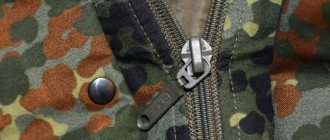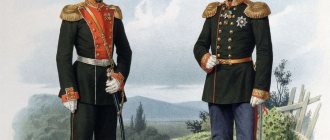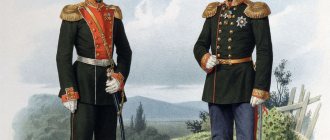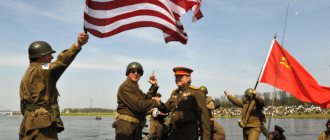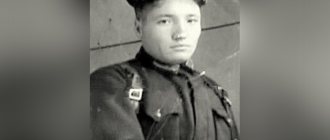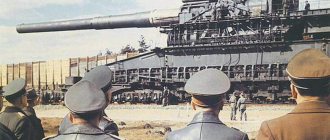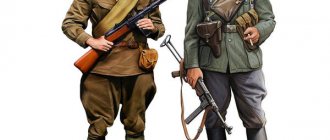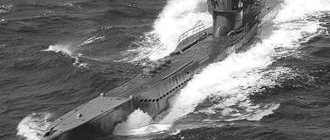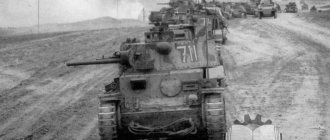01/27/2018 History of military boots of the US Army from the 2nd World War to the present day
Tweet
In the field, one of the most important pieces of personal equipment for a soldier is shoes. Just as supplies of dry rations, water, and ammunition are critical to success in ground combat, having a good pair of boots for every soldier and Marine is vital.
Since World War II, combat boots have come a long way, evolving from generation to generation to fully meet the demands of modern combat. Nowadays, a certain type of military boots has been developed for each climate zone and weather conditions.
Development of military boots
Specialized infantry boots emerged during World War II, replacing the gaitered boots that had been used up to that point. The Americans called this type of footwear “Combat boots.” Soldiers and Marines, who make up the bulk of the armed forces, now have boots tailored to their needs. Combat boots were included with the uniform for general use, along with specialized models for cold, hot and wet weather, as well as shoes for specific military specialties such as tank crews and paratroopers. However, they did not replace safety boots for firefighters and representatives of other military professions.
At the beginning of USMC Basic Training, each recruit is issued boots that are used for all non-physical training and running training activities. After the young fighter course, soldiers wear these shoes for field training, garrison duty, during combat simulation, and of course in real military operations. Combat boots are used in all activities where safety boots (safety boots, cold weather boots, hot weather boots, etc.) and uniform footwear are not required or permitted.
Military boots issued by the Army or Marine Corps are different from the hiking boots sold by various companies. Military boots are used for running, jumping, rock climbing, moving on the belly, drill training, hiking and other activities. While hikers generally stay on the trail or climb rocks, soldiers and Marines may be ordered to fight their way through dense forest, brush, mud and water. In addition, uniform boots are used in populated areas where there is a lot of asphalt, concrete, and stairs. In contrast, combat boots are used for a variety of physical activities performed in a wide range of conditions.
The evolution of US Army camouflage.
The uniforms of the US Armed Forces have undergone great changes over the past hundred years.
The material, cut and color have changed. All these parameters changed depending on the experience gained during combat operations. Our article will discuss the evolution of the American field uniform and the camouflages used over the period of time from 1940 to the present day. During this period of history, events took place that directly pushed the military industry to intensively develop new models of uniforms. Such events are the Second World War (1939-1945), the Korean conflict (1950-1953), the Vietnam War (1955-1975), the Afghanistan War (1979-1989) and operations in the Persian Gulf (1990-1991). The Second World War.
At the beginning of this period, the US military used uniforms of a single color
. These colors were “olive” and “khaki”. Since 1942, the “P42 Pacific” camouflage began to be used. But this pattern was used mainly in the production of capes and covers for helmets. At the beginning of the war, uniforms were made mainly of diagonal twill, which was a fairly durable material, but also had disadvantages. It did not dry well and became heavy from moisture. Then they began to sew the uniform from cotton material with water-repellent impregnations, it turned out to be better. Only capes and helmet covers were made with a camouflage pattern. The products were double-sided and had colors for forest and desert areas at the same time. The problem was that the forest camouflage strongly resembled the German one, and there were cases when their own people were mistaken for opponents and opened fire.
War in Korea.
Shortly after the end of World War II, the Korean War began. The soldiers' uniform had not yet changed dramatically. In this military campaign, American troops used uniforms made primarily of cotton. The suit was painted either in a single color “khaki” or “olive”. At that time, military camouflage was not yet widely used and was quite rare.
Vietnam War.
During the Vietnam War, the situation changed. American military personnel began to use uniforms made from 100% cotton, made using rip-stop technology. The material made in this way is reinforced vertically and horizontally with a special thickened thread, which forms a characteristic “checkered” relief on the fabric. This structure prevents the damage from increasing in the event of a material rupture.
Regular units mostly wore a monochromatic uniform in the “olive” color, but there were exceptions. For example, special forces actively used Tiger stripe camouflage. This camouflage was borrowed from the local army and worked well in jungle conditions. In turn, the Vietnamese army took this color scheme from the French and redesigned it to suit the conditions of the jungle. Beginning in 1968, the Marine Corps began using a camouflage pattern called "ERDL". Work on it began back in 1948. In appearance it resembled the M81 "woodland" camouflage pattern, but was more blurred. This pattern was the first successful attempt at creating a universal camouflage pattern for tropical and woodland environments in the US military. It was intended to replace the olive-colored uniform with a similar one in ERDL camouflage. In terms of material, the Americans continued to sew uniforms from rip-stop fabric, which increased the durability of the uniform and reduced the overall weight of the product. Subsequently, the US Army sewed entire uniforms from this material, changing only the color.
Period 1980 – 2000.
Over time, the US Army finally abandoned the plain uniform and switched to camouflage. The well-known M81 “Woodland” pattern became the main army-wide camouflage pattern. This coloring was intended for combat operations in forest areas. Its progenitor was “ERDL”. The material from which the uniform was made also underwent changes. Instead of 100% cotton, they began to use mixed fabrics consisting of 50% cotton and 50% nylon. The addition of nylon to the material increased the wear resistance of the uniform compared to the pure cotton version. This uniform was made in two types of fabric: diagonal twill and rip-stop.
By the early nineties, the US military began planning operations in desert areas. In this regard, the “Desert 6” camouflage was developed. The new design performed well during tests in the Nevada desert. The uniform was made exclusively from twill material and, accordingly, had a high fabric density. But during the combat use of such camouflage in Iraq, it turned out that the pattern did not work well on the ground, and due to the high density of twill, soldiers often suffered heatstroke.
The uniform was eventually abandoned and given to Iraqi forces. In 1992, the unsuccessful “desert 6” was replaced by the more suitable “desert-3”. It had a simpler camouflage pattern and looked like “woodland” in a different color scheme. The new uniform was made primarily of rip-stop material, which made it lighter and less hot. It was actively used in the second Iraqi campaign and operations in Somalia. Some units of the American army still use Desert-3. We need to remember about two more camouflage options that were used to varying degrees in the US Army at that time. These are "City" and "Desert Night". "City" was created for combat operations in urban environments. The shape of the pattern was no different from M81, only the colors were changed. It was sewn, like “Desert 6”, from diagonal twill. Camouflage was not widely used due to its narrow specialization and was quickly withdrawn from service.
“Desert Night” is an even more highly specialized camouflage pattern. Was designed for camouflage at night. It was assumed that the silhouette of a person would be broken if you looked at him through a night vision device. With the advent of more advanced devices, this camouflage became useless and was removed from service. Thus, during the second half of the twentieth century, the American army came a long way from plain uniforms to camouflage patterns, and many uniform variations were developed. However, they were all created for specific military conflicts. As a result, a form created for one area turned out to be useless in another. This led not only to high costs, but also to difficulties in supplying troops with suitable uniforms in a short time.
2000s – our days.
By 2004, the US Department of Defense had formed the opinion that it was necessary to create a universal camouflage pattern. Such camouflage was supposed to camouflage a soldier well in any terrain and at any time of the day. According to the technical specifications, the new form had to have a pixel design rather than a regular one. This is how UCP was born. According to tests, camouflage blurred the silhouette of a person on any terrain. It worked best in mountainous areas, in the city and at night when using night vision devices. The uniform was sewn in an ACU cut from a mixed material using rip-stop technology, making the uniform durable and reliable. Even earlier than the army, the Marine Corps also thought about its own pixel camouflage. In 2001, testing of the MARPAT camouflage began. It was developed in two versions: for the forest and for the desert. Using a computer, the drawings of M81 and Desert-3 were digitized. The resulting camouflage showed excellent results in tests and was adopted for service. A similar form was made from diagonal twill. Later, samples of uniforms made of “non-flammable” material appeared. The Navy and Air Force also received their camouflage. The Navy began using the "MARPAT" variety in blue tones and without any significant changes in the pattern. Also, “AOR 2” was created for special forces of the Navy. This camouflage is a variation of "MARPATA" but with a shifted color scheme towards light green colors. For the Air Force, the design was changed, and it became similar to the digitized “tiger stripe”, but in UCP colors. The camouflage was called “ABU” and was produced in two versions: twill and rip-stop fabric.
After 2010, they began to develop a more advanced and universal camouflage that could camouflage on any terrain, which was called “multicam”. At the moment, the army is actively decommissioning the UCP and introducing multicam. The uniform is made from both conventional mixed fabrics and non-flammable materials.
From all of the above, we can conclude that over almost eighty years, camouflage has become more advanced, and the uniform has become more durable and reliable. And ultimately, both continue to improve.
You can purchase many of the presented camouflages in our stores.
***
“We work throughout Russia: St. Petersburg, Novosibirsk, Yekaterinburg, Nizhny Novgorod, Kazan, Chelyabinsk, Omsk, Samara, Rostov-on-Don, Ufa, Krasnoyarsk, Perm, Voronezh, Volgograd, etc.
Fast delivery to the Moscow region: Balashikha, Podolsk, Khimki, Korolev, Mytishchi, Lyubertsy, Elektrostal, Krasnogorsk, Kolomna, Odintsovo, Serpukhov, Shchelkovo, Domodedovo, Orekhovo-Zuevo, Ramenskoye, Zhukovsky, Pushkino, Sergiev Posad, Dolgoprudny, etc.”
Army boots with gaiters
At the beginning of World War II, American soldiers wore low boots with canvas gaiters. The gaiters were difficult to put on and take off and did not provide adequate protection. The shortcomings of the boot-gaiter system subsequently led to the appearance of high field boots (combat boots).
The World War II field boot design replaced uniform boots with gaiters. Model 1939 "Boots, service, with compound sole", where the boots reached to the ankle and were made of tanned leather in a dark red color. The first batches were supplied with leather soles, which were replaced by rubber soles after 1940 (type I and type II).
type I
type II
The design of the boot was changed in early 1943 (known as Type III) - the upper of the boot was made of rougher reverse leather, and reinforcement with rivets was added.
A simplified version of the Type III boot was accepted into service at the end of 1943 as the "Reverse Leather Service Boot". This sample differed from those previously supplied in that it was designed slightly lower, did not have a reinforced toe, and was equipped with nylon laces instead of cotton ones. The last two types are the most common boots seen on the battlefields of World War II.
Navy and Marine Corps field boots differed from Army boots only in their soles, which were made from reclaimed rubber.
In the field, all service boots were worn with gaiters that covered the lower leg. The gaiters had a strap that covered the boot from below, in the area in front of the heel. The gaiters were fastened with rows of hooks and eyelets. At the beginning of World War II, high gaiters made in khaki or light olive shades were used, which by 1944 were replaced by short, dark olive (color OD#7).
Most Army personnel wore service boots in combination with gaiters until the end of the war. This type of footwear, after the end of World War II, continued to be used for garrison service.
However, there were units in the US Army, not counting, of course, the Airborne Forces, that did not wear gaiters with boots. They will be discussed below.
Work uniform
The American uniform of World War II was one of the most thoughtful and comfortable. Despite little field experience, the designers who created this uniform for the US Armed Forces did an excellent job, taking into account all the application features, aesthetic and practical aspects. This is especially noticeable in the design of the working uniform of the US Armed Forces during the Second World War. It is the uniform worn by the US Army that will be discussed in this article.
American soldier in working uniform. Europe, 1944
For convenience, we will create a character named "Joe" and walk with him through several articles and the entire Second World War, keeping an eye on what uniform he wears.
So, Joe arrived at the recruiting station at the end of 1942 and, like all volunteers after being distributed by branch of the military, went to a special camp for training. Upon arriving there, they cut his hair and gave him a new uniform. The first kit a recruit received included underwear, sports uniform, HBT work uniform, boots and gaiters. Today we will talk about the herringbone twill work uniform (HBT).
Like many of the early World War II U.S. Army uniforms, the HBT work uniform was designed to replace the then-obsolete denim work clothing that had been used by the U.S. Army since World War I. Using the experience gained, the developers from the military department set themselves the task of creating a comfortable, lightweight and practical uniform for work. Already in 1941, the first samples made of durable and lightweight twill, a lightweight gray-green cotton fabric using bias twill weaving (herringbone), were presented for testing. This type of weaving increased the strength of the fabric. The first type of this uniform was a set of pants and a shirt. The pants were created taking into account almost all the needs of a fighter: a high belt, on which buttons for suspenders were installed on the inside, wide trouser legs that did not restrict movement, a fly with five buttons, more practical in field conditions than a zipper. The end of each pant leg had a button to tighten it, which was often necessary for working on machines or in places where something could get caught in the wide pant leg. The shirt was cut so that the sleeves did not reach the wrists, which was an advantage for work. Also, the shirt from the first sample HBT kit had two small chest pockets with a vertical fold. The pants pockets were slit. The shirt had a wide collar fastened to the back with two buttons, lapels and was fastened with 9 buttons, two of which were located at the very bottom, preventing it from unbuttoning when moving.
Overalls 2nd sample
However, already in 1942, a number of changes were made to this design: on the pants, instead of mortise ones, deep sewn pockets with a button appeared, and on the shirt, the pockets simply increased in size. The changes also affected the collar of the shirt: the lapels on the second type of NVT were greatly reduced, but a special internal “gas” valve appeared, which, if necessary, protected the fighter’s body during a gas attack. The buttons on the second type also changed: if on the first samples they were simply sewn on, then starting from the second pattern they were attached to metal rivets.
Gas valve on a late model overalls
The US herringbone twill work uniform underwent two more revisions: at the end of 1942 and in May 1943. With these modifications, the color of the fabric and the shape of the pockets of the shirt and trousers changed slightly.
Late work uniform set
This uniform also included a Panama hat or cap. The Panama hat was a small soft hat with a stitched brim made of the same fabric as the uniform itself. The cap from the NVT set was also made of gray-green twill and had a dense stitched visor and side eyelets for ventilation.
HBT cap
In addition to the set of pants and shirt, a special overall made of the same material was developed for US Army technicians and engineers. In fact, it was a simple “fusion” of pants and a shirt and was the “father” of the NVT uniform. The first sample of overalls appeared in 1938 and, like the first prototype of the NVT working uniform, had side mortise pockets on the pants and two chest pockets on the top. Its main differences from the NVT were a wide fabric belt sewn on the lower back and a back pocket located on the pants, which in the first sample was closed with a simple flap. The second version of the overalls appeared in 1943 and differed from its predecessor in the side sewn pockets on the pants, one large chest pocket located on the left side, the appearance of a gas valve in the design and a button on the back pocket lid.
Second part of the article
Cavalry boots and tank boots
Cavalry and horse artillery units, as well as some armored units, were equipped with high lace-up leather boots (or boots), which can be seen in photographs of the early 1940s.
The tall corded leather boot was discontinued around 1940 with the introduction of a new simplified design called the Legging-Top Laced Leather Boot. The new design featured three belts on the top of the boot with a leather buckle, essentially replacing that part of the old boot. And the easy-to-fasten buckle effectively eliminated the arduous task of putting on and tying old boots. Later, this idea was used again when the "M-1943 field boots, with double buckle" were developed in 1943.
Tall leather boots still appeared in uniform tables until 1945, as a substitute for the new boots, but were noted as a limited standard. Subsequently, they were cut down to fit like regular boots, but the markings remained the same as on full-length cavalry boots.
And for tank crews, special tank boots were made of leather, having a durable design with tightening straps.
Why did Hitler's tank crews not have helmets?
A tank helmet is an element of military uniform that appeared in the First World War. Then, when the first tanks appeared on the battlefields and tank battles began. The first developments were neither comfortable nor efficient. Tank helmets of the early 20th century were practically unable to protect the crew either from shrapnel, or from hot splashes of metal, or even from everyday injury that a tanker could receive during severe shaking while the vehicle was moving.
Subsequently, in preparation for the Second World War and after its outbreak, the participating countries refined and improved their tank helmets (which later became helmets), increasing their reliability, comfort and functionality. Whose helmets were the best based on these characteristics? The scientific-patriotic publication and the information portal of the same name “Military Review” conducted their own research - “The History of a Tank Helmet”. As a result, the following data was obtained: - an English tank helmet - one of the first to be put into service back in the First World War. It was modernized from the Mk.I infantry helmet and was popularly called the “basin” for its characteristic shape, reminiscent of a metal basin. The base is an alloy of steel and manganese, which eliminates the magnetization of the helmet. A balaclava made of waxed fabric and mesh with an antiseptic cotton lining, fastened from the inside with one button, made it possible to adjust the size. In addition to this, the first tank helmet, the British tankers of the Second World War had modernized models - Cruz-1 and Cruz-2. According to Military Review, British tank helmets were not particularly reliable; - the French version was made on the basis of the infantry helmet of O. Adrian. He also became the developer of the tank helmet itself in 1917. The helmet was not equipped with a visor, but was supplied only with goggles to protect the eyes. This design feature allowed French tankers to use a gas mask in conjunction with a helmet. Such helmets provided poor protection from concentrated rifle and machine-gun fire into the open viewing slots of the tank used by German troops; - Soviet tankman helmet from the Second World War - model 1938, was converted from an aviation one. Beginning in 1942, the helmet began to be equipped with radio equipment and was renamed the headset. From the point of view of convenience and comfort, it was perhaps the most successful - multi-layer protection made of natural materials (bikes, fur, tarpaulin, leather, horsehair) effectively protected against injuries and frostbite, providing shock absorption during impacts. Valves were provided to protect the ears. Subsequently, this headset was in service with the army of the USSR and a number of other countries almost until the complete collapse of the Soviet Union, and even later; - An American tank helmet was also developed in 1938. According to the technical specifications of the US Department of Defense, the design had to be light, reliable and durable. The competition was won by Rawlings Manufacturing Corporation and already in 1940 began producing the American model of the M1938 tank helmet based on the sports headgear of American football players. The base is a well-ventilated synthetic fiber plus a liner made of four leather petals. This helmet did not protect against bullets and shrapnel, but it was comfortable and light. If necessary, American tankers could put a standard M1 steel helmet over it; it was also always in the tank. Subsequently, the model became quite popular and was exported to China, Great Britain, and Israel; — German tank helmets resembled French and English ones, but were additionally equipped with a chainmail mask that protected the soldier’s neck. However, already during combat operations in Poland, German tank crews abandoned helmets and began to use standard caps. The reason why this was done is still the subject of discussion and debate among military experts. According to one version, the helmets were not compatible with radio equipment, which was an extremely important element of tank combat in Nazi Germany. According to another, in the spacious and comfortable German tanks there was no need for additional protection for the heads of tankers. One thing is obvious - the Panzerwaffe did not approve or introduce a special helmet for tank crews. Although its development continued until 1940, not a single model presented in experimental samples officially entered service; - Italian tank helmets of the M1935 model have proven themselves to be quite reliable, and even subsequently, until the 1960s, they served tank crews not only in Italy, but also in other European countries; - Japanese helmet - a hemispherical frame made of cork, effectively and evenly distributed the impact energy. But, alas, it did not protect at all from bullets and shrapnel. There was also no protection for the ears and neck.
Thus, we can conclude that the most reliable and effective were Soviet, American and Italian models of tank helmets from the Second World War.
Service boots, field M-1943, with double buckle
The design of the high field boots from World War II was a step up from the low boots with gaiters. “Boots, service, field” became the first real field boots and were boots made of reverse leather with a sewn-on high boot, secured with a pair of buckles and belts. The boots were developed as part of the field uniform improvement program known as M-1943, which was adopted in November 1943, however, relatively few pairs of these boots were issued until the end of World War II, and after the victory, these boots were issued only to divisions operating abroad. High boots replaced gaiters, simplifying the design and improving combat performance.
Structurally, these boots were nothing more than “Service boots, made of reverse leather” with a higher shaft (some samples were made directly from old-style low boots).
The upper of the shoe was made of leather with the rough side turned outward, which allowed it to absorb water-repellent impregnations faster and retain mechanical properties better than polished leather. The top of some boots was made of the same material, but turned with the smooth side out. The sole, which was integral with the heel, was molded from synthetic materials or rubber.
Early versions of the M1943 field boots (also known as M43 boots) had an olive canvas lining in the shaft. The lining was sewn only onto the back of the boot. The strap detail that wraps around the leg had no lining. In later batches, instead of olive, white tarpaulin was used.
“Boots, service, field” were also produced for women, for which the cut of standard women’s uniform boots was used with the addition of a double-buckle beret.
In the period from 1943 to 1945, when double-buckle field boots were not yet produced in the required quantities, Ranger units, as well as some regular infantry units, used airborne boots as a replacement - the famous "Corcoran", which were very popular, due to the elitism of airborne units. To the delight of the paratroopers, this practice was stopped when M43 boots began to arrive in sufficient quantities.
At the same time, for a short period of time, instead of the usual models, double-harness models were supplied to the airborne units.
However, the legendary airborne jump boots are worth mentioning separately.
Winter and autumn uniforms of US soldiers during World War II (12 photos)
Author: curcha
June 23, 2022 10:13
Tags: World War II World War II history uniform
8619
12
This post is dedicated to everyone who is interested in military uniforms and simply the history of World War II. Very interesting and rare information
0
See all photos in the gallery
0
Winter. American troops during World War II were poorly equipped with winter uniforms. Instead of warm down or fur jackets, soldiers and officers wore overcoats and parkas. The Americans felt all the inconsistency of this form in the winter in Belgium. Frostbite occurred everywhere, and deaths from hypothermia were also recorded. In 1939, the US Army adopted a new overcoat model called the Melton OD Wool Overcoat. It was this model that became the main overcoat in the US Army for many years. The long, fitted, double-breasted woolen overcoat had a folded collar with lapels, two side slit pockets and a fragmentary lining. It would seem, what could be simpler? However, this overcoat also had secrets. One of them was a special pocket design. Inside the overcoat, the pocket was sewn on only one side and fastened with a button on the other. It can be assumed that this was done so that the fighter could get something from his trouser pocket without lifting the heavy hem of his overcoat.
×
0
The coats of the overcoat were also not as simple as they seem. Both floors could be folded inside and fastened there with buttons, thereby freeing the legs. Of course, this decision was not something new, but its relevance remained undeniable. Among other things, the overcoat had shoulder straps fastened with buttons and a rear strap that held the overcoat together. The strap was also secured with two buttons.
0
Like many other types of uniforms in the US Army, the overcoat has been modernized, but only slightly. In the second pattern, which appeared in 1942, the overcoat had plastic buttons instead of gilded steel buttons, exactly copying the buttons of the “early” model.
0
The US Army adopted a parka called the Alpaca Lined Overcoat in 1941. The parka was a long coat made of thick cotton fabric lined with faux fur. Having a hood and two side sewn pockets, the parka of the first sample was very different from the Field OD Arctic Jacket. It was longer than the jacket, although it was fastened with a zipper and an external button flap. Also included with the parka was a belt with a wide buckle. In the second pattern, the strap was made from a narrow webbing and had a clasp, like the chinstrap of an M-1 helmet.
0
But this was not the only innovation in the 1943 model park. In this pattern, it received additional slit side pockets, a drawstring on the hood, an additional button on the collar and snap-fastened cuffs. However, the most important innovation was the removable liner. It was made, as in the first sample, from faux fur and had elastic cuffs. It was attached to the outer part with buttons. Despite their convenience and practicality, it cannot be said that the parks were a great success among the soldiers at the ETVD.
0
The main outerwear of the American infantryman during the Second World War was the jacket. Cold European weather forced US soldiers to wear jackets even in the summer. Anyone who saw photo and video chronicles of the landing of American troops in Normandy probably noticed beige jackets on the soldiers. These were the M-1941 Field OD Jacket.
0
To be fair, it should be said that the development of the M-1941 jacket began back in 1940, but, as you might guess, the first sample was put into service only in 1941. Becoming something completely new in the line of outerwear for an American soldier, the jacket was designed by General Parsons, who at that time was in the 3rd US Army Corps. Taking a simple civilian windbreaker as a basis, Parsons created an extremely comfortable and practical cotton jacket lined with a mixture of cotton and wool.
0
The jacket, with a high belt fastened with two small side straps secured either with buttons or small buckles, also had a folded collar with lapels, cuffs fastened with buttons, two side mortise pockets with flaps and was fastened with a zipper, which was hidden by an external flap c 6 buttons. Like almost all new uniforms, the M-1941 jacket did not restrict movement, but was durable and warm. It dried quickly, but at the same time could hold water for a long time.
0
The second most popular was the Winter Combat Jacket, which became more popular as the Tanker Jacket. The jacket got its nickname due to the specifics of its use. Initially, this model was developed exclusively for tank and motorized units, but due to its successful design, it quickly became popular in infantry units.
0
The first example of this jacket was developed in 1941 and was a lightweight cotton jacket with an elastic waistband, cuffs and collar. Like the M-1941, the Tanker also had a zipper, but unlike its infantry “comrade” it did not have an external valve. In its first version, the Tanker Jacket had sewn pockets without a flap, but already in the second sample the jacket's pockets become mortise. In fact, this was the only innovation, but, as in the case of the M-1941 jacket, the second model of the Tanker Jacket became extremely popular among soldiers. Part of the popularity of this model is the merit of General George Patton.
0
As a permanent commander of tank units, Patton had an understandable weakness for everything related to armored vehicles. The Tanker Jacket was no exception. There are several photographs of General George Patton wearing this jacket with the US 1st Armored Division patch sewn onto the chest. It was after Patton that the fashion arose among the crews of various combat vehicles from different units to place the divisional patch on the chest rather than on the shoulder.
Source:
More cool stories!
- Magnificent seven facts about everything in the world
- When a date didn't go according to plan: stories from the Internet
- An 11-year-old man was bedridden and cured himself
- The job of a car mechanic is full of surprises.
- Finds from the La Pomoika boutique
Tags: World War II World War II history uniform
Did you like the post? Support Chips, click:
21 27 -6
Did not like
-6 0
9
Partner news
USA. Hard hats and helmets
Steel helmets
The US initially used the M1917A1 helmet, also known as the Brody helmet. It differed from the English helmet by having a brim that was 5 mm smaller. Back in 1928, War Department official Robert Patterson proposed a design for a helmet consisting of two parts - the steel helmet itself and the liner, which was made of cardboard or other lightweight base that could be easily removed without any damage to the helmet itself. Later, Sydenham developed this idea, at the same time abandoning the shape of the English-style helmet.
M1917A1 helmet.
However, the first tests of the new helmet took place only at the beginning of 1941, which showed its effectiveness. As a result of the tests, minor modifications were made to the liner fastening system, which in the initial version was carried out with just one rivet in the helmet arch. In November 1941, the helmet was adopted by the American army, and then its production quickly began. The helmet received the designation "Helmet steel M-1", which was shortened to "M1". The depth of the standard helmet was 17.7 cm, length - 27.9 cm, width - 24.13 cm, weight - 1.45 kg.
Each helmet consisted of two parts: a steel helmet, which was made from an alloy of steel and manganese, and a lightweight liner, which was initially made from compressed cardboard, later from nylon-based organotextolite, painted olive green on the outside. On the inside of the M1 liner there were fabric tapes that performed shock-absorbing functions. These tapes were securely fastened with special brass holders.
The liner followed the shape of the helmet, connecting to it with a special leather strap that was thrown over the visor of a steel helmet. Inside the balaclava there was a special suspension consisting of slings, of which two main systems could be distinguished: central and occipital. The occipital system was simpler and consisted of a strap attached to the balaclava itself and tightening it. The central system was much more complex - it was an adjustable ring covered in leather. Thanks to this system, the creators of the helmet were able to solve the problem of producing helmets of different sizes. Now every soldier could easily adjust the helmet exactly to himself. At the same time, the suspension also fulfilled a much more important mission: when it hit the helmet, the tensioned slings absorbed the blow, saving the soldier from being hit by the helmet itself. Also, in addition to the main task, the liners had a second one, which was to protect soldiers from injury outside of combat. At the same time, the significant weight of the helmet had a detrimental effect on the cervical vertebrae. For this reason, only balaclavas were worn at parades and official events.
Later, in order to improve the camouflage of soldiers, camouflage covers were developed. The covers usually had holes for placing elements of vegetation in them for more reliable camouflage. In December 1943, it was proposed to reduce the amount of manganese in helmet steel, which had become a scarce material during the protracted war.
M1 helmet.
Two-element M1 helmet device. On the left is a steel helmet shell 1 mm thick in a camouflage “Woodland” cover weighing 1 kg. On the right is a hard liner made of organotextolite weighing 350 g.
In 1942, a fiber “M1 Helmet Liner” was created for the helmet, which could be worn separately as an impact helmet, and in a combat situation the M1 helmet was worn on it without a liner. It was customary for Americans, both then and now, to put insignia of military rank on their helmets. By the end of 1945, approximately 22.3 million M1 steel helmets had been produced, which remained in service until 1985. In addition to the US armed forces, the M1 helmet was used by the armed forces of other countries, such as Canada and Israel. Also, some countries have developed their own helmets based on the M1, for example, the Japanese Type 66 helmet.
Paratrooper Helmets
M2 parachutist helmet.
The M2 helmet was produced from 1942 and differed from the M1 by the chinstrap strap, which was D-shaped, leading some to call it D-Bales. This was supposed to keep the helmet from falling during the jump. However, the arms for attaching the belt were spot welded to the helmet and often fell off from the impact upon landing. In total, about 118 thousand helmets were produced, which were used until the beginning of 1945.
M1C parachutist helmet.
The design of the M1C parachutist helmet eliminated the disadvantage of the M2 helmet with a chinstrap fastening and was mass-produced from January 1945. Now the fastening bracket has become movable. In addition, the chin strap had a latch button at the end for attaching to a balaclava.
T-14 helmet for film-photographers.
Practical application of the T-14 helmet.
In May 1944, the original M-1 helmet model was developed, which was intended for military cameramen and photojournalists. The main difference between this helmet and the M-1 was the rising frontal part, which made it possible to bring the equipment to the face without removing the helmet itself. Despite the fact that the T-14 helmet model passed a series of tests in the European theater of operations, this helmet was not widely used in the American army.
Anti-aircraft helmet
M-3 anti-aircraft helmet of the bomber crew.
Machine gunners in M-3 helmets in the cabin of a B-17 bomber.
The M3 helmet (flak helmet) was created specifically for the Air Force to protect heavy bomber shooters from shrapnel. The helmet is based on a steel sphere from M-1 with a built-in suspension without a liner. Folding protective shields with cork gaskets were attached to the helmet. This structure of the helmet was due to the fact that it had to be worn over the headset. In total, about 200 thousand of these helmets were produced.
M-5 anti-aircraft helmet.
The M-3 helmet was replaced by the modernized M5 helmet, which in appearance differed only in the shape of the folding flaps. They provided greater cheek protection than their predecessor. The short front visor that was on the predecessor M-3 was also removed. From the end of 1944 to the beginning of 1945, about 90 thousand of these helmets were produced.
Flight helmets
As elsewhere in the world, US Air Force pilot helmets were made of soft material, often leather, and were intended solely to protect the pilot from the effects of wind and cold. To protect the eyes, special glasses came to help the helmet. With the development of wireless radio communications, leather helmets turned into headsets, and with the achievement of high flight altitudes, they began to be equipped with oxygen masks. During World War II, American pilots used a variety of flight helmets from different manufacturers, designed for almost every type of aircraft. However, most of them were unified and were produced in series A, B, C, D and E. The variety of summer helmets in the USA is also explained by the fact that at that time there were no uniform standards, and each aircraft manufacturer equipped them with its own helmets. In addition, the helmets were ordered by both the Ministry of Defense and the command of the military branches: ground, coastal defense, and naval forces. By type, helmets were divided into leather and canvas, winter, summer and tropical. At the same time, despite the huge variety of helmets, they differed structurally only in the material of manufacture and the fittings used.
Canvas summer helmet A-8 model 1933.
The helmet was used by US fighter pilots arriving in England in the spring and summer of 1942. The helmet was also used by the Chinese Air Force and at the beginning of the war against Japan. One of the helmet modifications allowed the use of A-9 and A-10 oxygen masks. The helmet was withdrawn from service in September 1944.
Canvas summer helmet A-9.
Summer canvas helmet A-9 with sponge rubber pads and buttons for attaching an oxygen mask.
Headset – A-10A.
It was almost identical to the AN-H-15 helmet, and differed only in the design of the straps at the back for attaching glasses.
Leather headset AN-H-11 for bomber and fighter pilots.
Leather headset AN-H -11 with oxygen mask and goggles.
Leather headset AN-H-11A.
Canvas summer headset AN-H-15.
Summer headset AN-H-15 with goggles and oxygen mask.
AN-H-16 winter leather helmet, which replaced the B-6 helmet in 1943.
Summer cap type B-1.
The cap was designed in 1939 for crews of closed cockpit aircraft using headphones for communication. The cap was made from OD gabardine fabric. From 1942, the cap was officially replaced by flight helmets, but some pilots used it until the end of the war.
Leather winter cap type B-2.
The cap was designed in 1939 for crews of closed cockpit aircraft using headphones for communication. The winter cap was made of sheepskin. With fold-down ear tips and tough leather sun visors, it kept you warm in cold weather. From 1942, the cap was officially replaced by flight helmets, but some pilots used it until the end of the war.
Share to:
Pages: 1
